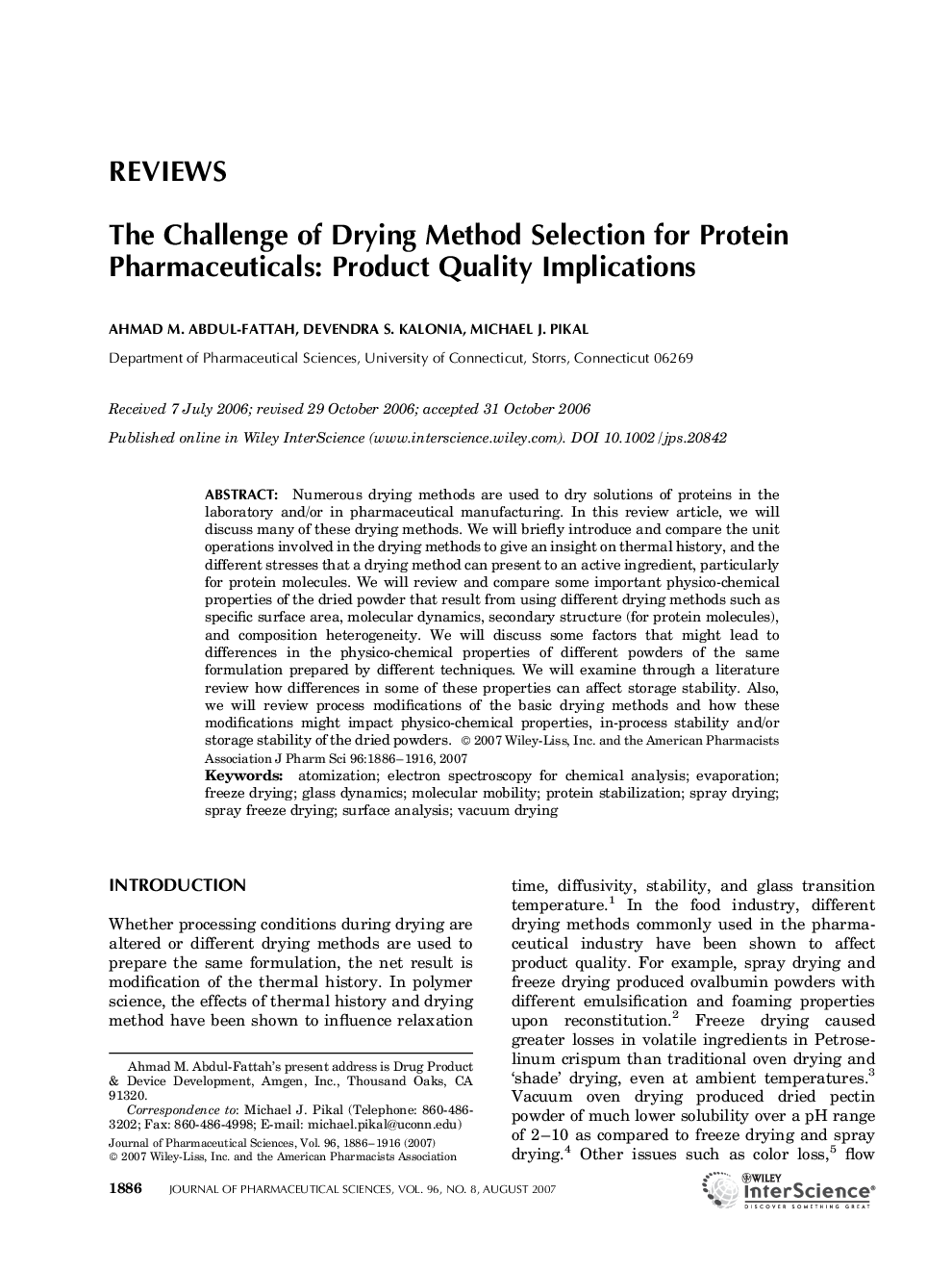| Article ID | Journal | Published Year | Pages | File Type |
|---|---|---|---|---|
| 2486104 | Journal of Pharmaceutical Sciences | 2007 | 31 Pages |
Abstract
Numerous drying methods are used to dry solutions of proteins in the laboratory and/or in pharmaceutical manufacturing. In this review article, we will discuss many of these drying methods. We will briefly introduce and compare the unit operations involved in the drying methods to give an insight on thermal history, and the different stresses that a drying method can present to an active ingredient, particularly for protein molecules. We will review and compare some important physicoâchemical properties of the dried powder that result from using different drying methods such as specific surface area, molecular dynamics, secondary structure (for protein molecules), and composition heterogeneity. We will discuss some factors that might lead to differences in the physicoâchemical properties of different powders of the same formulation prepared by different techniques. We will examine through a literature review how differences in some of these properties can affect storage stability. Also, we will review process modifications of the basic drying methods and how these modifications might impact physicoâchemical properties, inâprocess stability and/or storage stability of the dried powders. © 2007 WileyâLiss, Inc. and the American Pharmacists Association J Pharm Sci 96:1886-1916, 2007
Keywords
Related Topics
Health Sciences
Pharmacology, Toxicology and Pharmaceutical Science
Drug Discovery
Authors
Ahmad M. AbdulâFattah, Devendra S. Kalonia, Michael J. Pikal,
